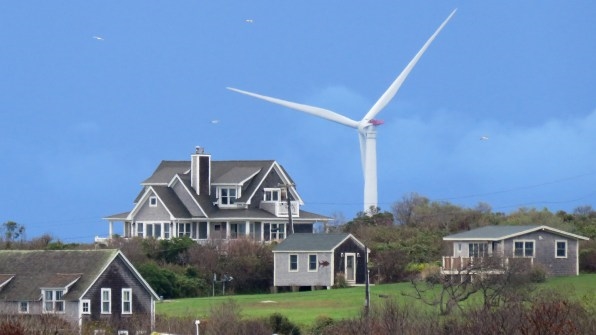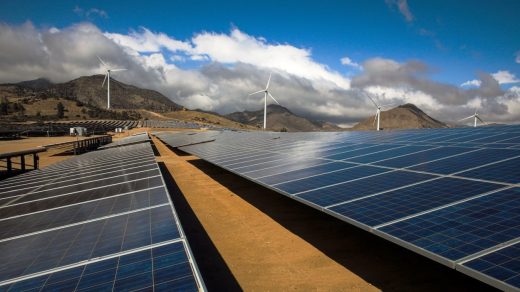4 big clean energy wins in 2022 (and a bunch of small ones)
By Dan Gearino—Inside Climate News
You can forgive people who work on U.S. energy policy for being tired this month. They have just sprinted, and sometimes slogged, through an extraordinary year of action and progress at the federal, state and local levels.
“It’s been a big one, for sure,” says Autumn Proudlove, associate director for policy and markets at the N.C. Clean Technology Center at North Carolina State University.
Not just a big one, but maybe the biggest one ever in terms of the number and scope of new laws and rules, she says.
Here are some of the key developments:
The Inflation Reduction Act: President Biden signed this measure in August following more than a year of ups and downs as Democrats tried to coalesce around a proposal that could pass the House and the Senate.
The law’s climate and energy provisions include about $370 billion in new spending on an array of tax credits and incentives designed to encourage the development of renewable energy, electric vehicles, and much more. The law is loaded with industrial policy, with incentives for companies to manufacture clean energy components within this country.
The Inflation Reduction Act is “certainly as big a step in the right direction as we’ve had in a long time,” says Corey Schrodt, legislative affairs manager for climate at the Niskanen Center, a Washington, D.C., think tank that describes itself as politically moderate.
How long? He points to the Energy Policy Act of 2005, signed by President George W. Bush, as the last example of Congress passing a major energy law. The law contained more than $20 billion, in today’s dollars, in energy-related tax incentives, and substantial funding for renewable energy development and research. It also had incentives for biofuels and fossil fuels, garnering criticism from environmentalists similar to the blowback to the fossil-fuel-friendly parts of the Inflation Reduction Act.
One takeaway is that Congress has an extremely difficult time passing energy legislation, he said. This is because of the clashing interests of major industries and deep partisan divisions about what good energy policy looks like.
The bills that do pass are often unsatisfying to advocates, with key provisions that don’t make it into the final versions. This was definitely the case with the Inflation Reduction Act.
Among the big things that didn’t make it into the bill were rules to ease the permitting of energy projects, which faced objections from some Democrats and Republicans for various reasons. Schrodt said this leaves a void, which will hinder the ability to build the renewable energy and interstate power lines needed for a transition to clean energy.
But even with its shortcomings, the Inflation Reduction Act has provided funding and policy support that sets the tone for the remainder of this decade.

State Energy and Climate Laws Get Bigger: Massachusetts and Rhode Island were among the states that passed major energy and climate legislation in 2022. The laws were indicative of a broader trend of states becoming more comprehensive and ambitious in their approaches to energy and climate.
Just a few years ago, state climate laws were more likely to be long-term goals that focused on the electricity sector, often with few details on follow-through.
Proudlove says states are “taking a more holistic policy approach rather than piecemeal policy actions.” Rather than just setting some goals and calling it a day, state laws are more likely to consider how to make sure the goals are attainable and how to monitor progress.
Also, states are accelerating their timetables for when the laws need to be showing results.
The Rhode Island law, signed by Governor Dan McKee, says that 100% of the state’s electricity use needs to be offset by the production of electricity from renewable sources by 2033. So, the electricity sector won’t be emissions-free, but any use of fossil fuels needs to be matched by production of renewable energy, some of which can be exported to other states.
The timetable is short enough that the state needs to take major actions right away, which is different from states whose targets take effect in mid-century.
Proudlove sees these new state laws as evidence of a rising baseline of what constitutes a normal clean energy law, which will likely mean that other states will follow suit as they adopt their first major climate and energy laws, and as they strengthen the laws they already have.
The Shift to EVs Hits Overdrive: Market share for electric vehicles is rising at a rapid pace, which is happening at the same time that automakers and battery manufacturers are investing tens of billions of dollars in new factories in the United States to prepare for a near future in which EVs are a mainstream product.
The changes on the road and in companies’ planning are being supported by new federal and state laws that provide incentives for EV purchasing and the development of charging networks.
The Inflation Reduction Act includes a tax credit of up to $7,500 for the purchase of a new EV, and a credit of up to $4,000 for the purchase of a used EV. Half of the credit for a new EV is subject to a requirement that the battery be produced in the United States, and half is subject to a requirement that the battery’s raw materials were extracted or processed in the United States or a country with a free trade agreement with the United States.
Even before the law was signed, companies had announced major investments in battery production in the United States. The companies were responding to forecasts of high demand and taking lessons from the COVID-19 pandemic about the perils of being overly reliant on suppliers halfway around the world.
EVs, including all-electric vehicles and plug-in hybrids, are now more than 5% of the new cars and light trucks sold in the United States, according to Kelley Blue Book. The share was 5.2% in the first quarter of this year, which was more than double from the prior-year quarter.
Schrodt says the transition to EVs is a crucial part of the broader shift to clean energy because it is visible in a way that other aspects of the transition are not. When he drives an EV people can see it, and drivers are now seeing a lot more EVs and charging stations.
“It’s a very visceral realization of what’s changing,” he says.
An Increasing Emphasis on Equity: State and federal energy laws are now more likely to include provisions to ensure that low- and moderate-income consumers receive a share of the benefits.
These carve-outs became more common in 2021 and have continued in 2022, Proudlove says.
“Across the board for clean-energy programs, consideration of [low-income] customers and underserved communities is becoming a constant priority,” she says.
One example is a new California law, the Community Renewable Energy Act, which uses tax credits and other tools to expand access to subscription-based community solar programs and energy storage.
It’s now normal, and even expected, that major state and federal energy laws be written with consideration of spreading around the benefits, Proudlove says.
But Wait, There’s More: In any other year, the state policy changes for rooftop-solar-net metering would be a top story. In 2022, they’re just another part of the big picture of legislators and regulators trying to figure out a fair way to move toward a cleaner grid.
California regulators are likely to vote soon on a proposal that would reduce the payments utilities make to rooftop solar owners for their excess electricity. The proposal is less onerous for rooftop solar owners than a previous version was, but it still represents a shrinking of benefits as utilities and regulators deal with the rapid growth of consumers producing their own electricity.
Offshore wind continued to move forward in 2022, with the federal government taking steps toward allowing projects on the West Coast and the Gulf of Mexico, as well as several East Coast projects that are close to construction. But this progress was still slower than many advocates would like.
In Hawaii and elsewhere, another point of emphasis for states was ensuring the durability of the electricity system in the face of extreme weather and other challenges. In Hawaii, the state’s largest utility has a plan to spend $190 million on making the grid more resistant to damage.
I’m going to end with a bit of wonkiness. Proudlove says that one of the major trends she saw was states figuring out ways to work more productively with wholesale energy markets and regional grid operators. In Colorado, for example, several major utilities announced their intentions to join a multistate market operated by the Southwest Power Pool, a grid operator. By joining the market, the utilities have greater flexibility to share resources, which should lead to greater efficiency and a decrease in costs.
Changes like the one in Colorado are far from public view, but essential for managing the costs and the reliability of the energy system at a time of great change.
(18)



